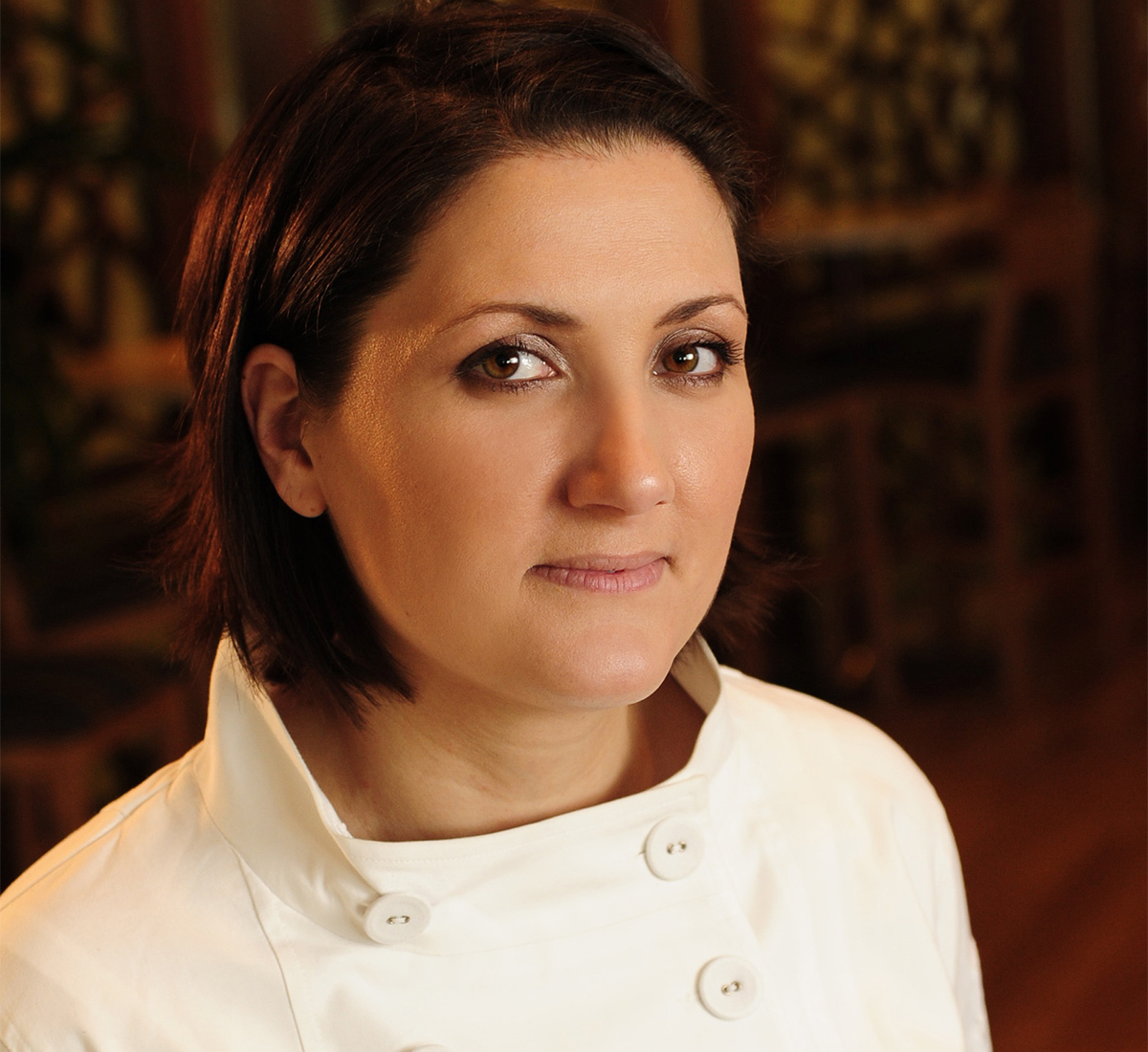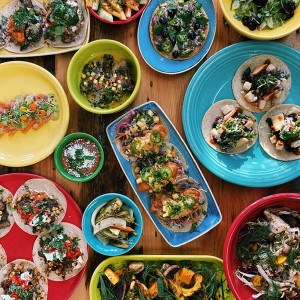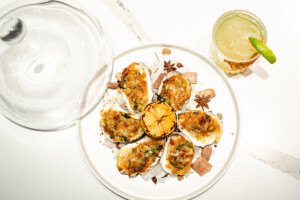Rachel Klein on the Merging of Art and Fine Dining

Chef Rachel Klein of Liquid Art House, which opens on May 6. Photo courtesy of Liquid Art House.
On May 6, Rachel Klein, longtime chef of the Mandarin Oriental and Seaport Hotel, will return to her roots in independent restaurants when she opens her latest concept, Liquid Art House. The art gallery/high-end restaurant hybrid is an ambitious project, and it combines Klein’s mutual passions for global cuisines and “experimental art.” Despite training under New York heavyweights like Anita Lo, Peter Hoffman, and Mark Spangenthal, Klein says that she’s always harbored a secret desire to open her own gallery, an impulse sparked by her family’s long history in sculpture and painting. Now she’s attempting to merge those two worlds by matching French, German, and Asian flavors with Liquid Art House’s rotating exhibits. I caught up with Klein to discuss the New York native’s path to Boston, Daniel Boulud, French rotisseries, and the spoiled heritage chickens that became the centerpiece of her new restaurant.
I understand you went to school for art history. Where did you go?
I went to Fairleigh Dickinson, but I didn’t finish. I was only there for a year and a half. My dad was huge into the arts, so I was always surrounded by it. I grew up going to museums and galleries, and traveling. My dad was always painting when he came home from work. My dad was an engineer who was really a painter. But he had to get a real job, so he designed nuclear power plants. He was a brilliant guy. I grew up with him painting, sketching, and selling his art on the side.
It must have been a great opportunity for you to leave your hometown of New York to work at X.O. Café in Providence.
I was working for Anita Lo [at Anissa] in New York, and I loved working for her. I would have worked for her for forever if given the chance. But it was one of those moments where you decide to just take a chance with your life. I loved Providence and it gave me a great platform to be a bigger fish in a smaller pond. It was exciting! Lot 401 was the second restaurant I was involved with in Providence, and it got a Best New Restaurant nod from Esquire. As soon as that happened I got a phone call from a gentleman in Boston who wanted to partner up and open something. That was OM [Restaurant and Lounge], and unfortunately it was short-lived, but it was great when it first opened.
Now it’s a Shake Shack.
Yeah, I went in there the other day and almost cried.
After all these years it still meant that much to you?
Every restaurant that I’ve ever been a part of has meant a lot to me. But OM was very bittersweet. It started off on such an amazing high note. Then some interesting things happened, things that were out of my control. It was sad because I really loved the space and we were doing some great stuff there. But things happen for a reason.
Did you immediately transition into working at the Seaport Hotel?
I wanted a completely different experience. A lot of chefs are super creative, and inspiring, and can think outside of the box, but many of them don’t have any business acumen. That’s why there are so many great chefs who open their own restaurant and they’re closed within a year. I really wanted to learn that side of it. I wanted to learn how to read a P&L, I wanted to understand budgeting, I wanted to understand that big-business picture. I was very fortunate that I was given this chance to work on a hotel program where I was redoing all their menus for room service and doing a lot of private dining and working on an interactive kitchen. It gave me all these different outlets to try new things.
But it sounds like you always intended to apply those skills elsewhere.
Oh, absolutely! I wasn’t planning on leaving Seaport, but I got this really amazing opportunity at the Mandarin Oriental. So I went to work for them as the chef of the property because I wanted to get back into that fine dining, five-star cuisine. Every hotel has a different star rating and Mandarin is one of the only five-star properties in Boston. Four Seasons might be the only other one. They have properties all over the world with some of the very best chefs like Pierre Gagnaire. So I thought it was a great opportunity to learn how to cater to a very upper-echelon clientele. It made me a better chef. Then this opportunity with Liquid Art House just kind of popped up. I was introduced to Ruta Laukien [ the owner of Liquid Art House] through a mutual acquaintance. We met and talked and I was genuinely excited about it. It’s a ballsy project.
So, you had decided to move on before it was announced that Daniel Boulud would be taking over Asana?
I had known about Daniel Boulud for a while. But I was the chef of the property, not the chef of that restaurant. That was just one of the things I was responsible for. With Daniel, I was involved some of the conversations that were happening. There was no bad blood. I think it was a great business decision. I was never anti-Daniel Boulud. How I was looking at it was that I was going to to manage a property with a star chef. That would have made my job easier.
Did the menu at Liquid Art House give you a chance to be more creative than you had been in a hotel setting?
As a chef, I get asked the question a lot, “what kind of food do you do?” One of the things that most attracted me to this project is that you don’t have to label yourself. The space is always changing, the art is always changing, the design pieces are constantly changing, and the kitchen can be changing, too. In the past, people have always associated me with a lot of Asian influences. This menu doesn’t have a lot of Asian influence at all. It’s really more about what I was feeling and what I was in the mood to learn more about. The rotisserie, for example, is a piece of equipment I haven’t had the luxury to work with in the past. I had been inspired by Rotisserie Georgette in New York, so we got this big, beautiful French rotisserie.
What’s your main focus with the rotisserie?
We’re doing these Green Circle chickens. No one else has them in the city except for Tony Maws. They’re from D’Artagnan and they are a French heritage breed that is being raised in Pennsylvania. The food that they’re fed is the scraps from Per Se. They’re eating all the kitchen scraps from Thomas Keller, David Burke, and Jean-Georges [Vongerichten]. Keller and Daniel Boulud and a bunch of other high-profile chefs wanted to bring French-style chicken to this country, so they collaborated with D’Artagnan to help develop this breed. They can’t produce large volumes of it, so it’s very exclusive. It’s amazing chicken! The white meat eats like dark meat.
What does the dark meat eat like?
Like butter. It literally falls of the bone. It’s so good!
How did you insert yourself into that exclusive little group?
I was working with D’Artagnan and our representative Tim knew that we wanted our meat program to be all-natural. I told them we have this giant rotisserie and we’re looking for a special chicken to feature. A week later, Ariane Daguine from D’Artagnan shows up in the restaurant while we’re in the middle of the build-out and drops off four chickens with the feet and heads still attached and says, “We want you to have our chickens!”
I assume this is why you have chicken feet on your menu.
Yes it is! The thing about these chickens is that when you look at them raw, the feet are so clean, they’re white. These chickens are so pampered and babied. When you look at normal chicken feet they’re dirty and there are pebbles and all kinds of stuff stuck on them. I’m always hoping to be influenced by the art in the space, as well. The first exhibit is called “Outside In” and it’s all about street art. We wanted to merge the two, so we decided to go with a street food concept for our first bar menu. Everyone thinks street food is only Asian, so we went more European. On the menu is French, Romanian, and German street food. Even the dumplings are more Lithuanian or Polish.
It sounds like your menu is going to be changing fairly often.
We’ve got some different tiers of dining. We don’t want to be this pretentious, upscale art restaurant. We want to be approachable, but classy. What’s going to stay, for the most part, are the steaks and rotisserie items. Those sections will be an anchor. We have a communal table that’s made out of an entire tree trunk that seats 10 people. So what we can do huge family-style roasts with sides and sauces and fun stuff like that. But we’ll continue to add stuff to the menu on a nightly basis. But more than anything, we want to be known for this chicken. It’s that good.


